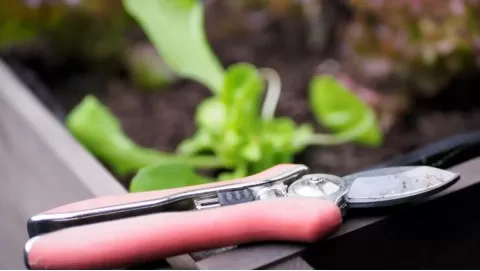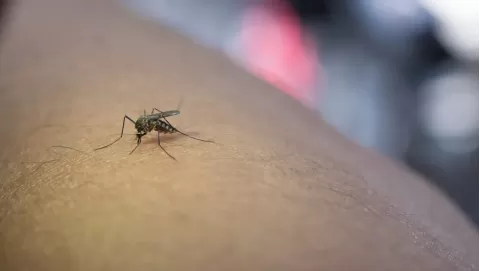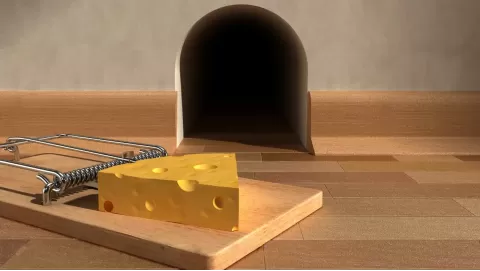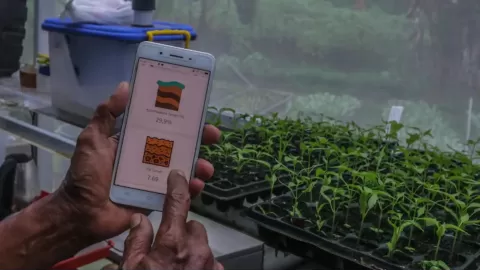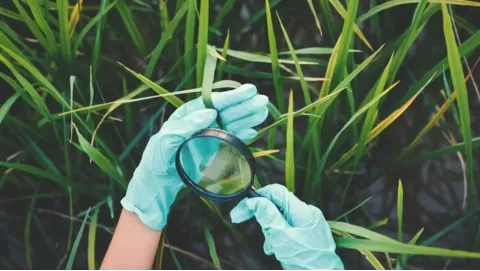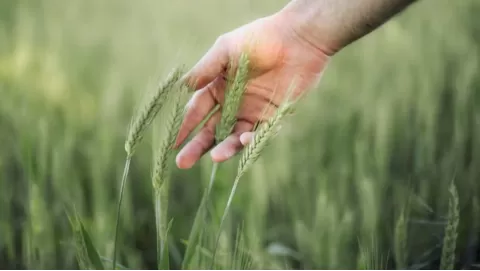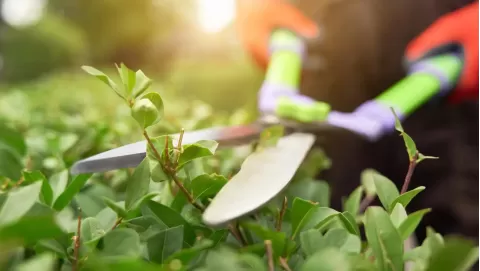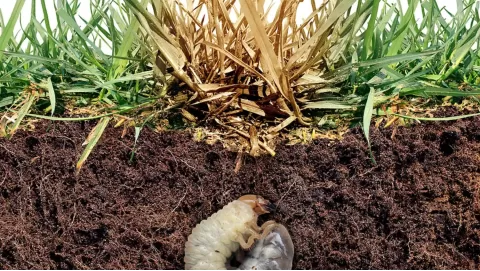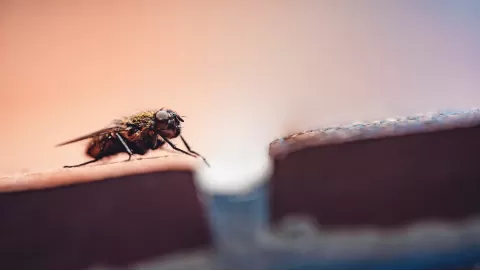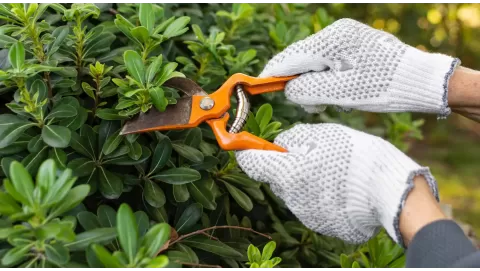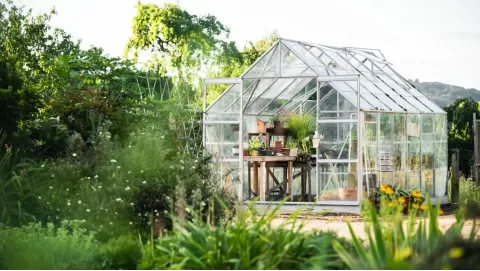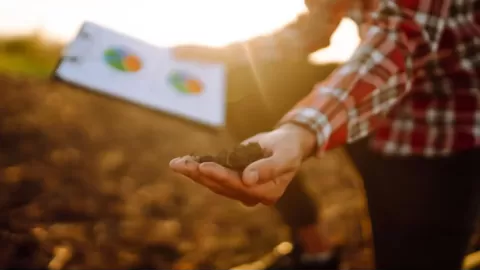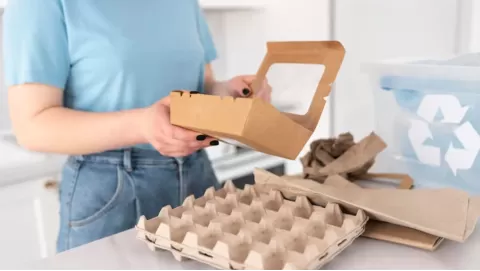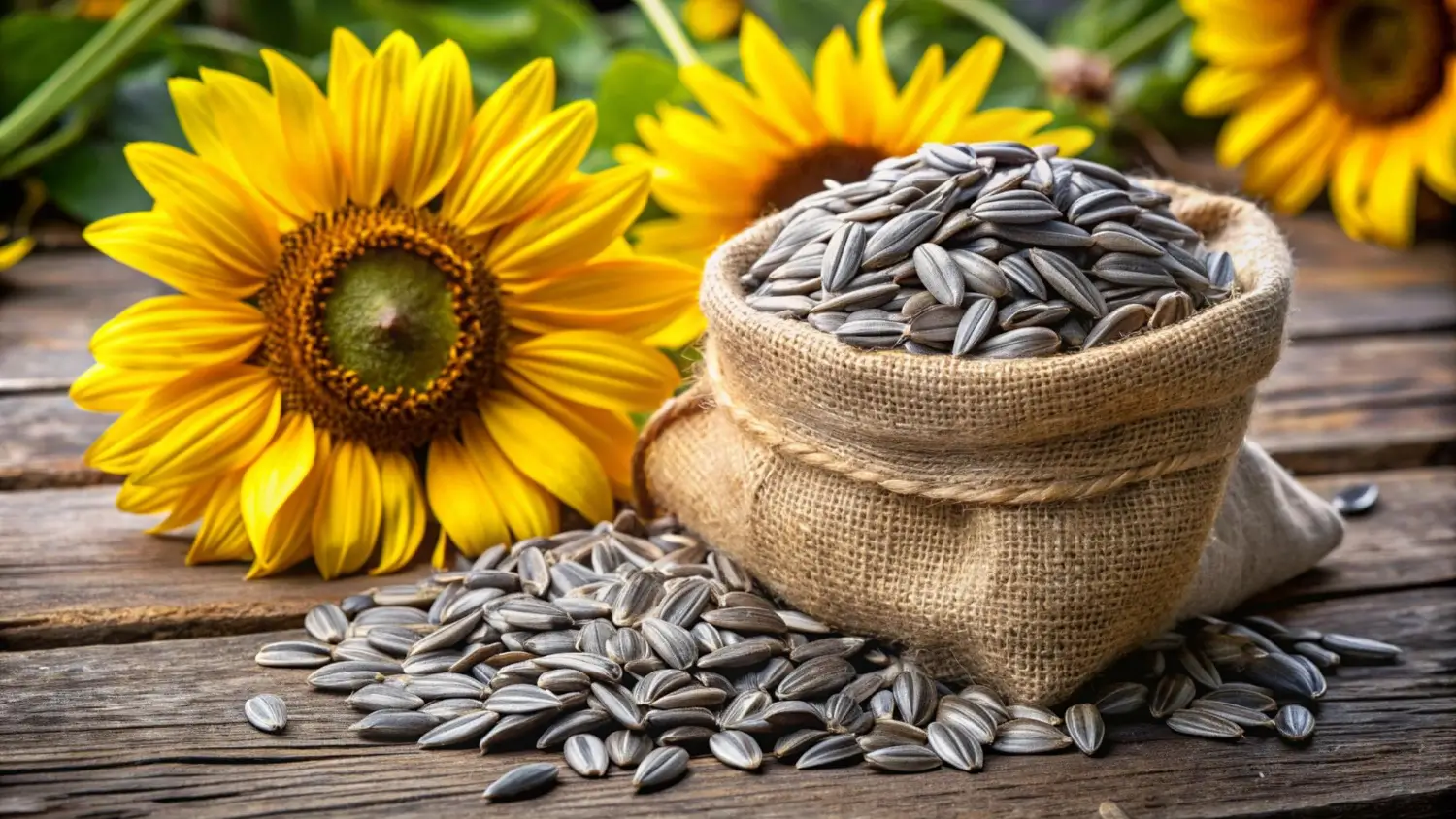
Grow stunning sunflowers: The best seeds for a vibrant garden
Planting different flowers makes the garden look beautiful and full of color. It also provides a quiet place to sit back with your family. Picking and planting different flowers is just fun, they each have their own look, color, scent. It’s environmentally friendly, too. Bees and butterflies like flowers and help plants grow beautifully. These pollinators are critical to our environment because they help maintain the balance of nature.
Sunflowers, especially, are very useful in a garden. They are eye-catching, tall flowers that have large heads of bright yellow petals, which are both unusual and a positive in many ways. Bees and other pollinators love sunflowers, which are important, as pollinators are necessary for pollinating many plants. They can also help the health of the soil by absorbing toxins and acting as a natural cleaner of the soil. Their seeds are good not just for you, but also for birds as they help increase the biodiversity in your garden. They are popular with gardeners due to their happy faces that will brighten up the garden.
Sunflowers belong to the Asteraceae, one of the largest plant family in the world. Its scientific name is Helianthus annuus. This family counts among its number many plants such as daisies and asters, which boast towering flower heads. The cheery sunflower has a deep history, planted first in North America. Native Americans cultivated them around 3000 B.C. for food, medicine and dyes. Sunflowers were brought to Europe by Spanish explorers in the 16th century. The plant achieved fame for its appearance and numerous uses for its seeds. Sunflowers, which are native to the Americas, were spread around the world and became economically and culturally significant, particularly in their use for oil. They are loved for their warmth by a great number of gardeners.
Explore Growcycle to buy the best sunflower seeds. Each one is tested and selected by experts to guarantee the greatest possible growth in all environmental conditions, including indoors. In addition to seed quality, Growcycle also provides helpful advice on planting methods, the best soil conditions, and care to enable the flower to thrive and the grower to flourish.
Physical Appearance
Sunflowers are well known for their tall stalks and large, circular flower heads. The flower heads can reach up to 12 inches across and are composed of sunshine yellow petals, called ray florets, that surround a huge central disk. Small flowers collectively called disc florets are in the central disk and these turn to seed.
Sunflowers have thick stems that may even measure up to 120 inches, which can make them bend gently to the wind. Despite their large size and showy appearance, sunflowers actually have a mild, sweet scent, and are often included in flower arrangements in home gardens.
Types of Sunflowers
Selecting the right variety of sunflower seeds is important when planting sunflowers if you want to grow sunflowers that are sure to please. A number of popular varieties exist, each with its own characteristics and varying suitability for different gardening applications:
1. Single Stem Sunflower
These types, like ‘Russian Mammoth’ and ‘Lemon Queen,’ each make one massive, stunning flower per plant. Single stalk sunflowers are perfect for gardeners who are seeking massive, dramatic flowers with a potential for epic height. They are also ideal for cut flower lovers - with their size and height, they are excellent table centrepieces.
2. Branching Sunflower
Varieties such as 'Autumn Beauty' and 'Indian Blanket' are also characterized by their many smaller flowers per plant, providing a bushy look and an extended period of blossoming. It's an ideal variety for sowing in garden borders, to bring extra room into full production. Productive and excellent for the border or wildflower garden because of their many heads.
3. Dwarf Sunflower
Some compact, small growers are 'Teddy Bear' and 'Sundance Kid.' Dwarf sunflowers are great for small spaces like gardens, planters, and even indoor planting. They are often well-suited to confined spaces and are still popular with those who have only a balcony or a very small yard. They are known for their flowers, which are attractive but small.
4. Giant Sunflower
Their species are characterized by their impressive height and large flowers. Cultivars including 'Kong' and 'Titan' are part of this group. Giant sunflower varieties can grow to be 144 inches tall or taller. It is a stunning and dramatic addition to any big garden or a ready-made natural privacy screen. They represent grandeur and are typically seen in sunflower festivals and garden exhibitions.
Why Should Gardeners Pick the Best Seeds to Grow Sunflowers?
Selecting the right sunflower seeds to grow is critical for gardeners who desire robust, healthy plants. The quality of seeds affects how well they germinate, grow, and resist diseases and pests. Good seeds tend to come from trusted sources, where they take care to ensure these are genetically sound and poised to create strong plants with big flowers.
Good quality seeds are less likely to have anything in them that is going to cause a problem with the garden or contain pathogens. High-quality seeds not only increase the likelihood of a great harvest but also ensure that sunflowers reach their full, beautiful potential, making them a stunning and useful addition to any garden.
Types of Sunflower Seeds
Good quality seeds are less likely to have anything in them that is going to cause a problem with the garden or contain pathogens. High-quality seeds not only increase the likelihood of a great harvest but also ensure that sunflowers reach their full, beautiful potential, making them a stunning and useful addition to any garden.
1. Linoleic
Linoleic sunflower seeds are common. They are high in polyunsaturated fats, primarily linoleic acid. These seeds yield an oil that is mild in flavor and that has a high smoke point. The oil is good for cooking and for making salad dressings. It’s heart-healthy and can lower cholesterol.
2. High Oleic
High-oleic sunflower seeds contain higher levels of monounsaturated fats, specifically oleic acid. The oil obtained from these seeds is longer lasting and is perfect for food preparation and processing. It also has health benefits, including lower saturated fat levels and resistance to high heat.
3. Sunflower Oil Seeds
Oil is pressed from sunflower seeds, both linoleic and high oleic. They are selected for their good oil yield and quality. The type you choose depends on use, and each type has specific health and cooking benefits.
5 Best Sunflower Seeds for a Vibrant Garden
For growing sunflower in the garden, gardeners can select from these best sunflower seeds for thriving results:
1. Wild Delight Black Oil Sunflower Seed
Wild Delight Black Oil Sunflower Seed is a top-notch choice and perfect for growing strong sunflowers in the garden. These seeds are chosen for their quality to ensure good plant growth. These seeds sprout quickly and grow into healthy plants, making it easy to get a good crop of sunflowers. Wild Delight sunflowers are tough and simple to grow. They need little care and do well in many soil types. They can handle drought and different climates, making them suitable for gardeners.
2. Penn Black Oil Sunflower Seed
Penn Black Oil Sunflower Seeds are packed with essential nutrients, which enhance soil fertility and support the growth of other plants in the garden. The black oil sunflower seed helps nourish wildlife, making these seeds popular for bird feeders. When composted, the oil enriches the soil, promoting healthier soil and better plant growth. Sunflowers grown from these seeds attract pollinators such as bees, butterflies, and hummingbirds. In addition to pollinators, sunflowers attract a variety of wildlife, including birds, squirrels, and other small animals.
3. Audubon Black Oil Sunflower Seed
Audubon Black Oil Sunflower Seeds have a lot of oil. Birds like to eat them. The oil also helps plants to grow well when used in compost. Also, sunflower roots go deep and loosen the soil structure. This helps water flow and makes the soil healthier for other plants. These Audubon seeds can attract birds and pollinators. They are also grown for their beauty and to help the garden. When these seeds break down, they add nutrients to the soil, helping other plants to grow.
4. David Sunflower Seed
David Sunflower Seeds are famous as a snack, but they also have qualities that make them perfect for growing sunflowers in a garden. When planted in the right conditions, these seeds grow quickly into strong, tall sunflowers, adding beauty and life to any garden. David Sunflower Seeds can do wonders for soil health. Their roots help loosen compact soil and improve drainage. Once they fully grow, the plants can be composted, returning essential nutrients back to the earth and enriching the soil.
5. Terrasoul Sunflower Seed
Terrasoul Sunflower Seeds are organic and non-GMO. They are free from pesticides and chemicals, making them eco friendly for growing plants. Sunflowers grown from Terrasoul seeds attract bees and butterflies, boosting pollination and helping other plants in the garden. These sunflowers also attract birds and other wildlife, adding variety to the garden and supporting a balanced ecosystem. Terrasoul Sunflower Seeds encourages sustainable gardening and helps create a healthier space for plants, animals, and nature.
Key Features for Choosing Sunflower Seeds
The following are some of the features you should check out before buying sunflower seeds:
Seed Variety: There are different types of seeds. Some are good for oil, while others are ideal for bird feed or human consumption. They have plenty of oil (especially black seeds), and striped seeds are especially popular among birds.
Climate Compatibility: Sunflowers do well, but need the right climate. Look at the climate, rainfall, and terrain of the region. Some seeds thrive with minimal water, while others require more moisture to flourish best.
Growth Duration: Examine how long a seed needs to grow to maturity. Select seeds that grow quickly for short seasons; for longer seasons, plant more gigantic flowers and seeds.
Disease Resistance: A few seeds offer more resistance to disease and pests. They require fewer chemicals and offer greater yields, resulting in healthier plants and larger crops.
Intended Use: What the grower hopes for is important to consider before their seeds start growing. For oil, pick high-oil seeds. For added decoration, pick seeds with colorful blossoms. They all have a different function.
Step-by-Step Guide to Grow Sunflowers with Best Seeds
Raising sunflowers from seed is a simple and rewarding gardening project that showcases the flowers at their best. Sunflowers look good in the flower bed and provide you with seeds. Gardeners can use these detailed steps to grow their own sunflowers:
Step 1: Select Required Sunflower Seed
Start with some high quality sunflower seeds in the garden department. Consider space available, desired plant height and type of sunflower (single-stem, branching, dwarf, giant). There are different varieties, which have unique characteristics such as flower size, bloom time, and height, so choose ones that fit with the gardening purpose.
Step 2: Choose the Planting Location
Choose a location in your garden that gets at least 6-8 hours of direct sunlight a day for sunflowers, since they prefer full sun. For sunflowers, an ideal planting soil can be evaluated with these conditions: rich, good-drained soil with a pH ranging from 6.0 to 7.5, and you can use a pH meter. Plant in areas that don’t get soggy, as too much moisture can cause problems like root rot.
Step 3: Soil Preparation
Dig the ground to a depth of at least 2 feet; this will enable the long taproot of sunflowers to reach down to water and nutrients further below the surface. Improve fertility, structure and drainage by digging in organic matter, such as garden compost or well-rotted manure, before planting. This all-natural supplement encourages vibrant root development and robust plants. Such debris and weeds must be removed from the area to reduce competition with the new plant for water and nutrients.
Step 4: Optimal Temperature
Sunflowers do best in a warm environment, with temperatures of 70°F to 78°F (21°C to 26°C). Because they are sun worshipers, they’ll require at least 6 to 8 hours of full sun. Keep nights above 50°F (10°C) during the early seedling stage to eliminate downy growth or injury.
Step 5: Planting of Seeds
Sunflower seeds are cold-sensitive, so wait to plant them after the last local frost date. Sow the seeds directly into the ground, 6 to 1 foot apart, depending on the variety.
Distance is enough for the roots to expand and for air to move. Plant seeds 1 to 1.5 inches deep, cover with soil, and water in well. Ensure that planting is proper; a good germination is dependent upon moderately good soil contact.
Step 6: Watering
After you plant the seed, water the site extensively to encourage moisture absorption and germination. Keep soil evenly moist throughout the germination process, which typically takes seven to ten days. A little spray helps prevent washing away the seeds or disturbing the soil. Avoid waterlogging, as sunflowers hate the wet, and the plants can rot and succumb to fungal diseases.
Step 7: After Care and Maintenance
Once the seedlings have germinated and grown a few inches tall, thin them out to achieve the desired spacing. This encourages each plant to have its space and prevents overcrowding. Water as necessary to keep the soil moist. Mulching the base of the plants can keep the moisture in the soil, maintain soil temperature, and keep the weeds at bay, and this in turn is beneficial for the healthy growth of the plants.
Step 8: Support for Tall Varieties
If the owner of the garden wants to grow big sunflowers, it is better to stake them or use a protected area (to avoid having the stems bend). As the vines grow and climb, loosely tie the stems to the supports to support and hold the plant in place. Tied them securely with soft garden ties or even fabric strips to prevent them from hurting the stems.
Step 9: Use of the Right Fertilizers
You can also feed with a well-balanced, slow-release fertilizer once a year for best growth. Select a fertilizer with a N-P-K ratio suitable for all plants. Watch out for overdoing it on plants fed with nitrogen, which can grow too tall and leggy with fewer flowers. Consequently ,aim for a happy medium (in terms of the balance of nutrients) and grow a healthy blooming plant.
Step 10: Pest and Disease Management
And of course, be on the lookout for pests that can damage the sunflowers, such as aphids, caterpillars, birds, and more. When you can, allow nature to control insects by covering plants with bird netting, for instance, or by attracting good bugs like ladybugs. To help prevent the spread of fungal infections, space your plants well apart and promptly pluck out infected leaves before they spread the disease further.
Step 11: Harvesting Seeds
As the sunflower blooms mature, they will eventually start to droop and dry. Seeds are ready when the back of the flower head becomes brown. Chop off the head, let it dry for a week or so, and then just rub the seeds out. Store seeds somewhere cool and dark right up until people are ready to eat, plant or share them.
Common Mistakes to Avoid
Successfully growing sunflowers does require attention. If you make a mistake, your crop might not grow, or you might ruin the value of your harvest. If they avoid these pitfalls, it is hoped that gardeners can cheer for a bold, bright display of sunflowers:
- Incorrect Spacing
One of the common mistakes people make is that they plant the seeds of sunflowers too close to one another. Overcrowded plants may become puny and spindly, jostling for nutrients and light. For optimal growth and most profuse flowering, it is necessary to space accordingly for the variety of sunflowers planted.
- Overwatering or Underwatering
Consistent watering is a must for the life of a sunflower. Overwatering leads to mushy soil, root rot, and fungal disease, while underwatering can cause stunted growth and sad-looking blooms. Strive to water deeply and evenly, encouraging the roots to go deep and the plants to grow tall.
- Ignoring Soil Quality
Sunflowers thrive in fertile, well-drained soil. And skipping the soil preparation of not incorporating the compost or organic matter in it might result in a deficiency of nutrients anywhere else. Hard or heavy clay-type soils can restrict root development where they are unable to spread, so good, loose, fertile medium is important.
- Planting in Shade
Sunflowers are the ultimate sun-worshipers and must be bathed in sunshine in order to grow robust and tall. If grown in low-light conditions, they can become too tall and spindly as a result of phototropism, which makes the plant stretch toward the light. Pick a spot where they will get as much full sun as possible (ideally most of the day) and your plants will thrive.
- Planting at the Wrong Time
When planting sunflower seeds, timing is crucial. Seeds sown too early in the planting season will result in seeds that are subject to cold and late frosts, and that will kill the seeds before they have even had a chance to grow. If you plant too late, on the other hand, you may not have a long enough growing season, and your plants may not reach full maturity before the first fall frost. There’s a lot of regional climate variation, and real soil that fails to frost is just perfect for this sunflower.
- Neglecting to Rotate Crops
Repeated sowing of sunflowers at the same site may leach the soil and cause sunflower diseases. Rotation of annual crops can help maintain the fertility of the soil and interrupt cycles of disease. If you practice a rotation system — not planting sunflowers in the same area of the garden every year — you’ll help keep the soil in good shape and discourage pests from spreading.
FAQs
How deep do you plant sunflower seeds?
Sunflower seeds are planted 1 inch (2.5 cm) deep, pressing them into well-moistened soil and watering lightly.
How much water do sunflowers require?
Sunflowers require at least one to two inches of water per week. Limited deep watering is necessary to stimulate root growth.
Can you grow sunflowers in pots?
Yes, smaller sunflowers can be grown in containers, as long as the containers are big enough to encourage good root development, and the plants can get plenty of light.
The Bottom Line
Sunflowers are a great addition to the garden to give it some color. With the right seeds and a little tender loving care, gardeners can have beautiful blooms inside and out. Given the proper care, sunflowers can be grown just about anywhere, from a sunny backyard to a single balcony.
Growcycle plays an important role in your gardening adventure, which will provide you with high-quality grass products and seeds customized for optimal growth and yield. By offering gardeners the top sunflower seeds that can thrive in all types of climates and soils, Growcycle gives gardeners the perfect foundation to establish their success with sunflower growing.
Disclaimer: This material is for informational purposes only and should not be relied on for legal, medical, financial, or other professional advice.



